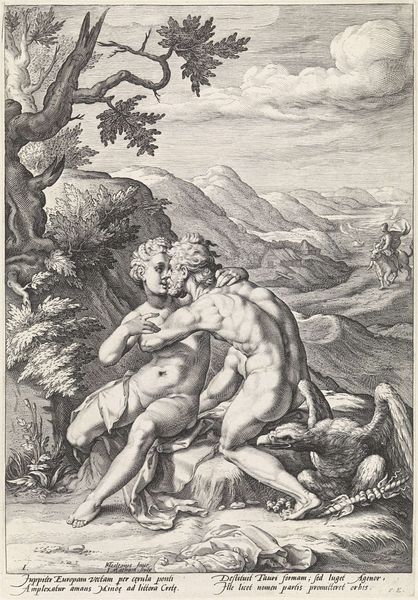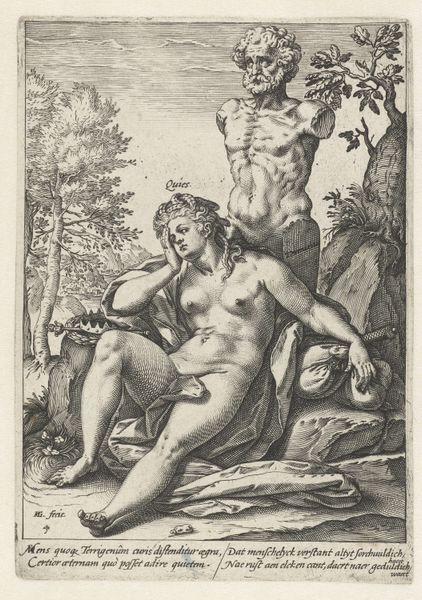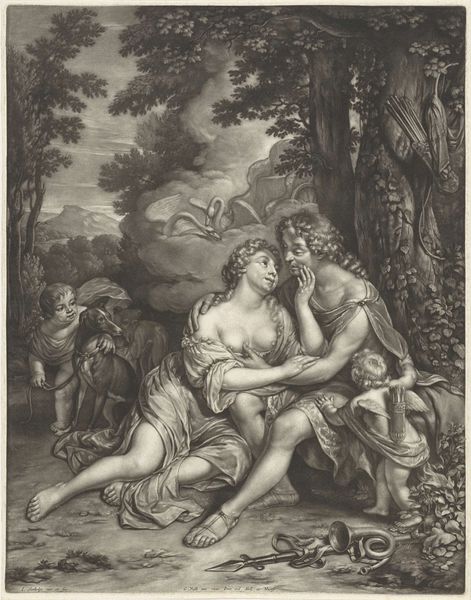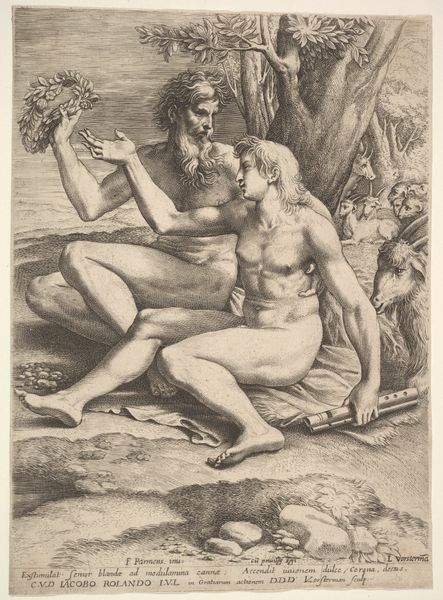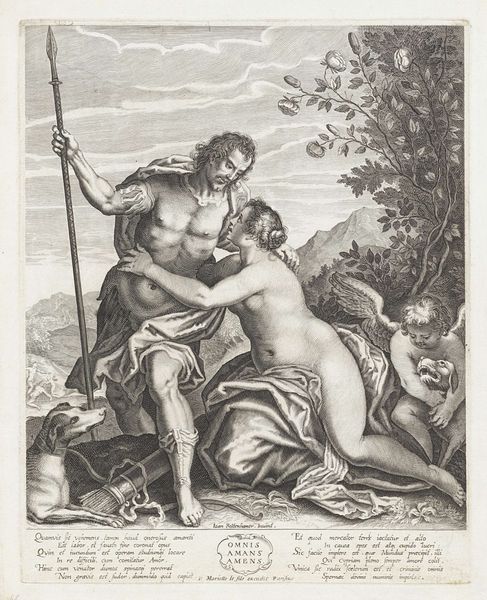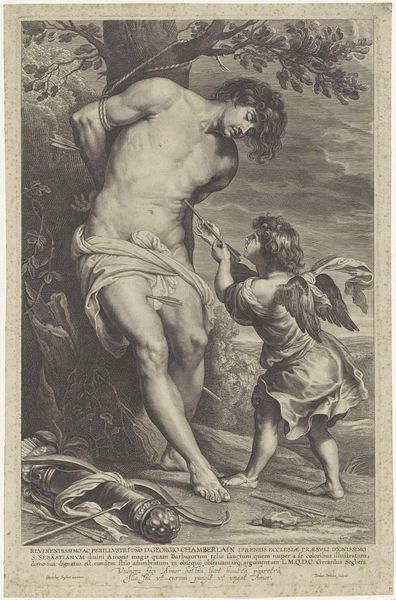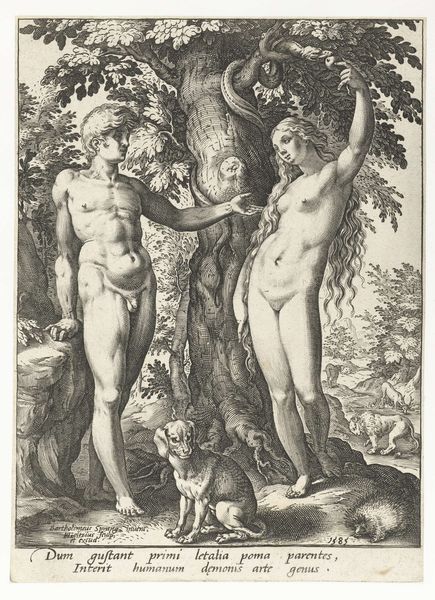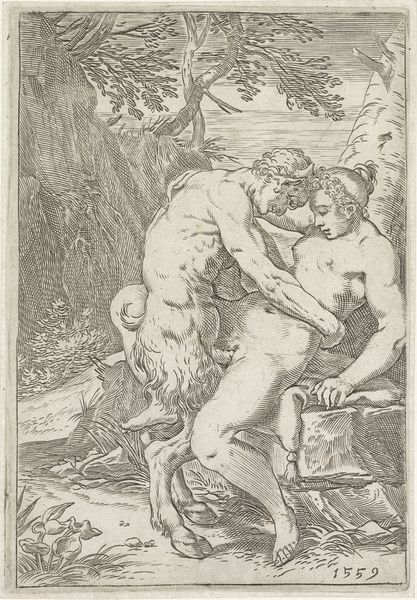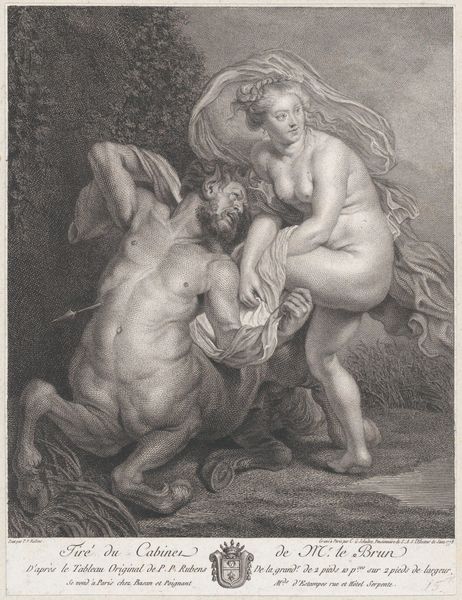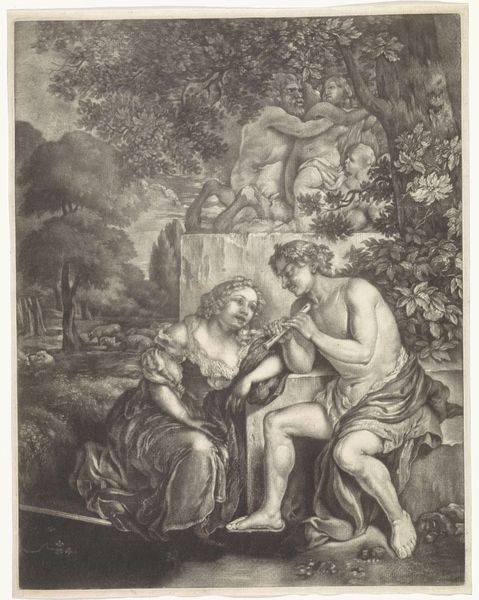
engraving
#
baroque
#
landscape
#
figuration
#
history-painting
#
nude
#
engraving
Dimensions: height 277 mm, width 193 mm
Copyright: Rijks Museum: Open Domain
Jacob Matham created this engraving, Hercules en Deïanira, in the late 16th or early 17th century. During Matham's lifetime, the Dutch Republic was in the midst of its Golden Age, a period marked by economic prosperity, artistic innovation, and intellectual exchange. Here, Matham depicts a moment of intimacy between Hercules, the celebrated hero of classical mythology, and his wife Deianira. The work presents a highly idealized view of the human form, reflecting the Renaissance interest in classical aesthetics. Hercules' muscular physique embodies masculine strength, while Deianira’s pose and expression are more demure. What does it mean to portray a woman in mythology as reserved compared to her strong, male counterpart? Matham's choice of subject and style reflects the cultural values of his time. Although he worked within the traditional norms of representing classical narratives, his technical skill as an engraver allowed him to bring a new level of detail and emotion to the story. This piece invites us to think about how artists negotiate their identities and express themselves within existing cultural frameworks.
Comments
No comments
Be the first to comment and join the conversation on the ultimate creative platform.
